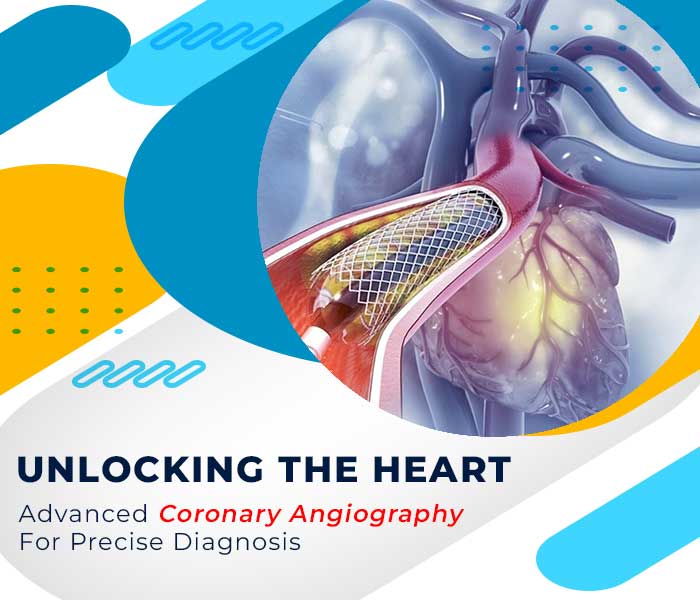A coronary angiogram is a procedure that is performed in a cardiac catheterizaion laboratory, popularly called as ”Cath.Lab.” Coronary angiography displays precisely the blood circulating in the coronary arteries that supply blood to the heart. It allows your doctor to see areas where the blood vessels may be narrowed or blocked.
How do I prepare for a Coronary Angiogram?
Before the procedure, tell the doctor if you have had any kidney problems or reactions to iodine-containing substances, such as kidney contrast dye. Follow the instructions provided by your doctor. Do not eat or drink anything after midnight on the day of the procedure except to take your medications.
What happens during the procedure?
The doctor injects a local anesthesia into your groin and inserts a needle into the artery that runs from your heart down the leg. The doctor puts a guide wire through the needle into the artery and places a catheter over the wire. A catheter is a long, slim, flexible tube used to inject fluid and measure blood pressure. The doctor directs a specially designed catheter and guides it to the opening of the coronary arteries (the arteries that supply blood to the heart ). Dye is injected into each of the arteries (the left and the right) and a digital x-ray film is taken to see if they are blocked. The doctor then, guides a catheter into the left ventricle (the part of the heart that pumps blood to the body). Dye is then injected into the heart to see if the left ventricle is pumping well or if it has been damaged sometime in the past.
The entire procedure is recorded on a digital CD Rom, which can be seen on a normal personal computer.
What happens after the procedure?
You may be discharged the same day. However you will stay under observation for at least 6 hours to ensure that the punctured artery in the groin seals naturally.
What are the benefits of this procedure?
This procedure provides important information about the function of the left ventricle of your heart. It also identifies blocked or narrowed coronary arteries. Any narrowing or blockage that exists can then be identified. In some cases, the doctor performs a balloon angioplasty with stenting procedure, immediately following the angiogram in order to open the coronary artery for blood flow.
What are the risks of this procedure?
Although the risk of Coronary angiography is negligible, you should ask your cardiologist about the risks, if any, that apply to you. The incidence of complications during angiography is less than 1%. The benefits of this procedure greatly outweigh the possible risks associated with it.
Is it absolutely necessary for me to undergo Angiograhy?
If you are a likely candidate for developing future coronary events, then, Coronary angiography is the most useful and accurate test for diagnosing blockages in your heart arteries. It allows the doctor to see exactly where the coronary arteries are narrowed or blocked. It is the gold standard amongst all the cardiac tests. It is most reliable and internationally accepted test for detecting the severity, nature and extent of coronary artery disease.


